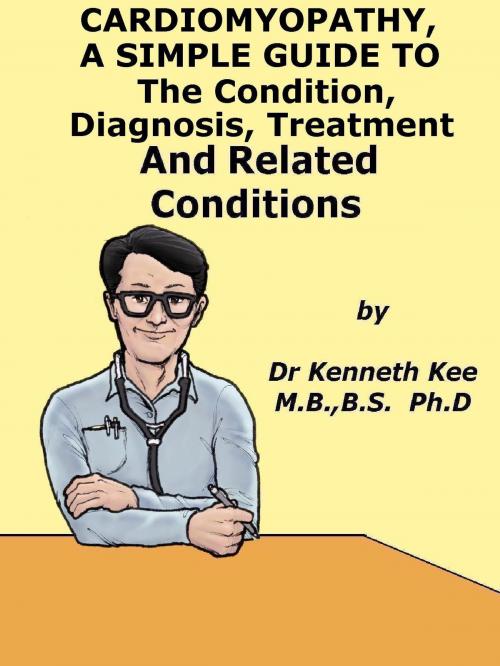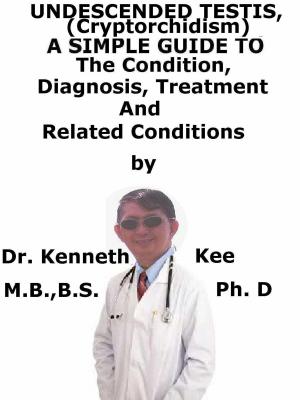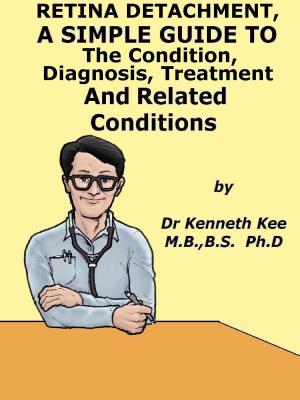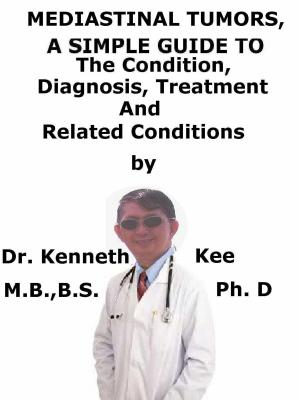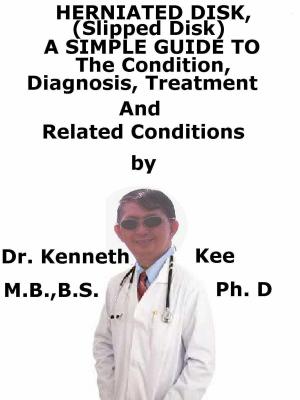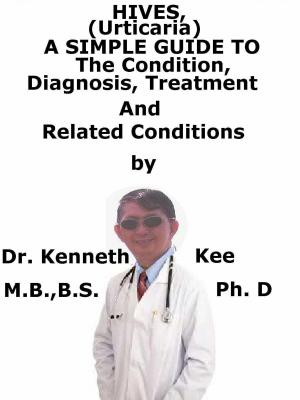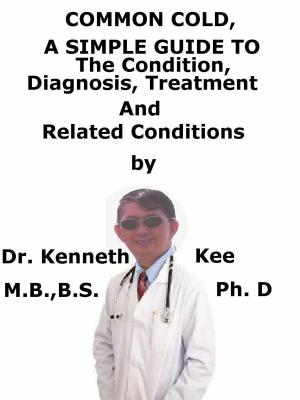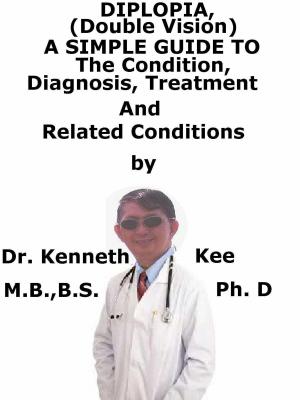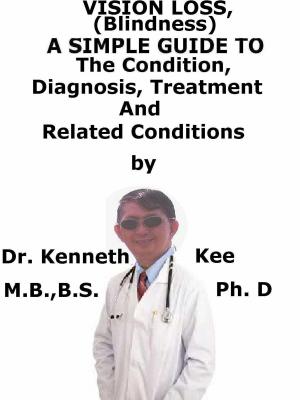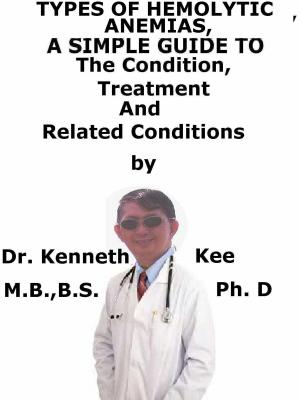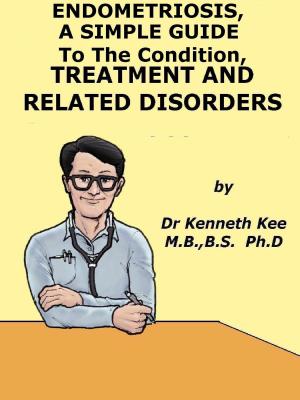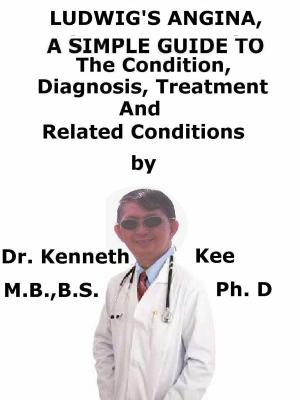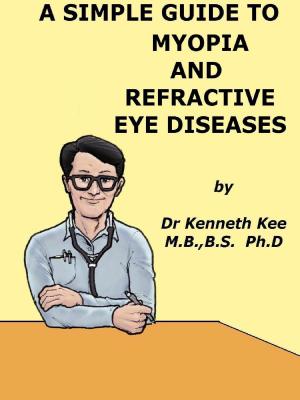Cardiomyopathy, A Simple Guide To The Condition, Diagnosis, Treatment And Related Conditions
Nonfiction, Health & Well Being, Medical, Specialties, Internal Medicine, Cardiology, Health, Ailments & Diseases, Heart| Author: | Kenneth Kee | ISBN: | 9781311627797 |
| Publisher: | Kenneth Kee | Publication: | September 19, 2015 |
| Imprint: | Smashwords Edition | Language: | English |
| Author: | Kenneth Kee |
| ISBN: | 9781311627797 |
| Publisher: | Kenneth Kee |
| Publication: | September 19, 2015 |
| Imprint: | Smashwords Edition |
| Language: | English |
Chapter 1
Cardiomyopathy
My mother had cardiomyopathy; so did her mother and brother both of whom died from heart failure.
My brother also had aortic regurgitation which had been treated but still has heart failure.
When I was 12 and down with mumps, I remembered my mother resting at home supposedly suffering from a mild heart attack after a strenuous period of school work.
The doctors all thought that she had ischemic heart disease.
When I was a medical student, I decided to have an ECG done on myself and found that I had mild right bundle branch block which was thought to be congenital and not serious at that time.
Medical students always have the tendency to think that they have the same disease that they read about.
Now it is believed to cause heart failure with passing of age.
In 1982, I had to fly to London because the doctors there were first giving medicines to slow down her heart and later to speed up her heart. She could barely recognize me at the hospital.
I signed for her hospital discharge and brought her back to see a Singapore heart specialist.
It was then that we discovered that she had cardiomyopathy, an enlarged heart which can cause heart failure but not coronary heart disease in her case.
My mother did have frequent heart failure.
However she did not like to take medicine including blood thinners and diuretics for her heart failure.
In the end she fell into a coma one night.
I quickly got up in the middle of the night to bring her to hospital.
She apparently had thrown out a blood clot from her heart to her brain which caused her to have a stroke.
She did not recover from her stroke.
Cardiomyopathy is the medical disease of the thickened or dilated heart muscle.
These enlarged heart conditions have many causes, signs and symptoms, and treatments.
The heart muscle is enlarged, thick or rigid.
Scar tissue can replace the thickened muscle tissue in the heart.
The heart becomes weaker as the cardiomyopathy becomes worse.
The heart is less capable to push blood through the body and maintain a normal electrical rhythm.
This condition will result in heart failure or irregular heartbeats called arrhythmias.
The heart failure will result in the fluid to retain in the lungs, ankles, feet, legs, or abdomen.
Other complications, such as heart valve problems, can be caused by the weakening of the heart.
The main types of cardiomyopathy are:
1. Dilated cardiomyopathy
2. Hypertrophic cardiomyopathy
3. Restrictive cardiomyopathy
4. Arrhythmogenic right ventricular dysplasia
Other types of cardiomyopathy sometimes are referred to as "unclassified cardiomyopathy."
Cardiomyopathy which is induced by stress, also called broken heart syndrome, is another type of cardiomyopathy.
What Causes Cardiomyopathy?
Cardiomyopathy can be familial or acquired.
1. Acquired means you develop it as a result of another disorder, condition or factor.
2. Inherited means the parents passed the gene for the disease on to you.
Investigators look for the genetic associations to cardiomyopathy.
They want to know how these links can cause or contribute to the different forms of the disease.
The cause of cardiomyopathy is idiopathic or not known.
This form of disease often occurs in children.
Cardiomyopathy involve people of all ages.
Certain forms of cardiomyopathy are more likely to occur in people in certain age groups.
1. Dilated cardiomyopathy is more common in African-Americans than in whites.
This form of cardiomyopathy also is more common in men than in women.
2. Teens and young adults are more likely than older people to have arrhythmogenic right ventricular dysplasia, although it is rare in both groups.
Chapter 1
Cardiomyopathy
My mother had cardiomyopathy; so did her mother and brother both of whom died from heart failure.
My brother also had aortic regurgitation which had been treated but still has heart failure.
When I was 12 and down with mumps, I remembered my mother resting at home supposedly suffering from a mild heart attack after a strenuous period of school work.
The doctors all thought that she had ischemic heart disease.
When I was a medical student, I decided to have an ECG done on myself and found that I had mild right bundle branch block which was thought to be congenital and not serious at that time.
Medical students always have the tendency to think that they have the same disease that they read about.
Now it is believed to cause heart failure with passing of age.
In 1982, I had to fly to London because the doctors there were first giving medicines to slow down her heart and later to speed up her heart. She could barely recognize me at the hospital.
I signed for her hospital discharge and brought her back to see a Singapore heart specialist.
It was then that we discovered that she had cardiomyopathy, an enlarged heart which can cause heart failure but not coronary heart disease in her case.
My mother did have frequent heart failure.
However she did not like to take medicine including blood thinners and diuretics for her heart failure.
In the end she fell into a coma one night.
I quickly got up in the middle of the night to bring her to hospital.
She apparently had thrown out a blood clot from her heart to her brain which caused her to have a stroke.
She did not recover from her stroke.
Cardiomyopathy is the medical disease of the thickened or dilated heart muscle.
These enlarged heart conditions have many causes, signs and symptoms, and treatments.
The heart muscle is enlarged, thick or rigid.
Scar tissue can replace the thickened muscle tissue in the heart.
The heart becomes weaker as the cardiomyopathy becomes worse.
The heart is less capable to push blood through the body and maintain a normal electrical rhythm.
This condition will result in heart failure or irregular heartbeats called arrhythmias.
The heart failure will result in the fluid to retain in the lungs, ankles, feet, legs, or abdomen.
Other complications, such as heart valve problems, can be caused by the weakening of the heart.
The main types of cardiomyopathy are:
1. Dilated cardiomyopathy
2. Hypertrophic cardiomyopathy
3. Restrictive cardiomyopathy
4. Arrhythmogenic right ventricular dysplasia
Other types of cardiomyopathy sometimes are referred to as "unclassified cardiomyopathy."
Cardiomyopathy which is induced by stress, also called broken heart syndrome, is another type of cardiomyopathy.
What Causes Cardiomyopathy?
Cardiomyopathy can be familial or acquired.
1. Acquired means you develop it as a result of another disorder, condition or factor.
2. Inherited means the parents passed the gene for the disease on to you.
Investigators look for the genetic associations to cardiomyopathy.
They want to know how these links can cause or contribute to the different forms of the disease.
The cause of cardiomyopathy is idiopathic or not known.
This form of disease often occurs in children.
Cardiomyopathy involve people of all ages.
Certain forms of cardiomyopathy are more likely to occur in people in certain age groups.
1. Dilated cardiomyopathy is more common in African-Americans than in whites.
This form of cardiomyopathy also is more common in men than in women.
2. Teens and young adults are more likely than older people to have arrhythmogenic right ventricular dysplasia, although it is rare in both groups.
